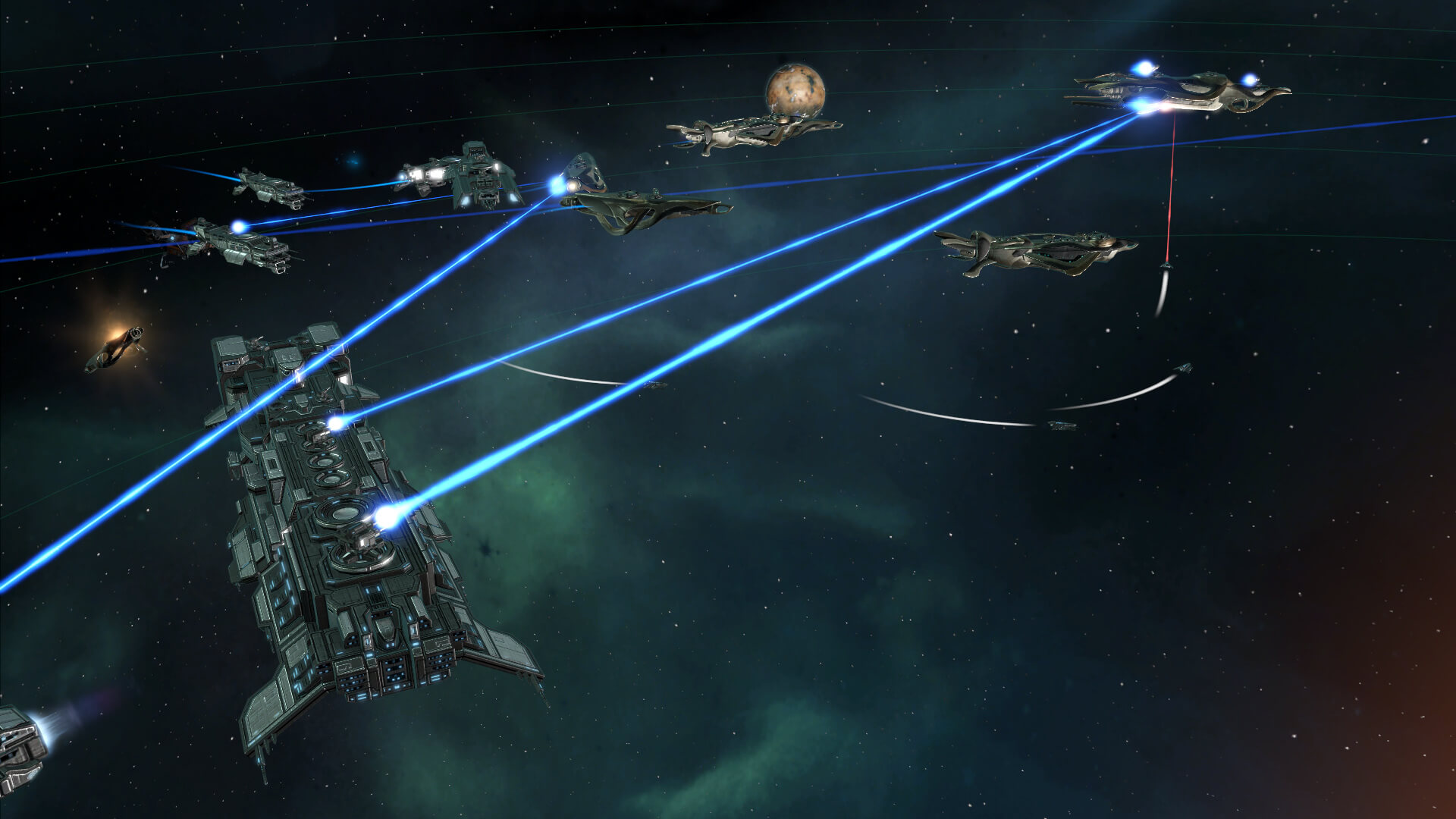Fleet combat, also known as ships blowing each other up, is the focus for this week’s Stellaris Dev Diary. Obviously, all of this information is still being tweaked and reworked; it’s subject to change at any time.
Weapons Systems
In Stellaris, your ships and defense systems will have various weapons to choose from. Instead of having a vast array of strange sounding weapons and projectiles, Paradox Development Studio has instead decided to implement a more clever “Rock Paper Scissors” system. Here’s a breakdown from Zoft (Project Lead on Stellaris)
One type of energy-weapon is the laser, using focused beams to penetrate the armor of a target dealing a medium amount of damage. Mass Drivers and Autocannons are both projectile-weapons with high damage output and fast attack-speed, but quite low armor-penetration. This makes them ideal for chewing through shields and unarmored ships quickly, but are far worse against heavily armored targets. Missiles weapons are space-to-space missiles armed with nuclear warheads. Missiles have excellent range, but they are vulnerable to interception by point-defense systems. There’s of course far more weapons in the game than these mentioned, but it should give you a notion of what to expect.
Each system has its own counterbalance, making space fights more like plasma-infused chess moves. Aside from the weapon systems mentioned above, you will also have the ability to deploy strike crafts. These straightforward sounding vessels are, in essence, fighter wings and bomber wings. Large ships will be able to hold strike crafts within specially designed hangar spaces, allowing for faster albeit weaker craft to strike the enemy ships. But how do you defend yourself from such nimble spacecraft?
Defense!
In Stellaris, each one of your ships will have an armor rating as well as a shield component — taking up precious utility slots on your ships. Armor reduces overall damage coming at the ship and this value can’t be depleted (that’s generous). Shields are finite and will act as a buffer between you and the deep deadly vacuum of space. Once those methods of fending off the enemy onslaught have failed, your ships will be left with their hull points and evasive maneuvers. Hull Points act as a standard health bar while the Evasion value will determine how often you can dodge an attack.
Like any recent Grand Strategy Game put out by Paradox, you won’t have direct control over the battle when the gloves come off. Again, Zoft explains the fine details:
Once the combat has begun, you very few options to control what happens, much like it works in our other grand strategy games. For this reason it is really important not to engage in a battle that you are not ready for. As a fallback, it is possible to order a full retreat through the “Emergency FTL Jump” option, this will basically cause your fleet to attempt to jump to the closest system. However, during the windup for the EFTL jump your ships will not be able fire back at the hostile ships, so you put yourself in an exposed situation. Depending on what type of fleet you have, you might want them to always engage in combat or always try to avoid it; for this purpose we have different fleet stances. The evasive stance will try to avoid combat and the fleet will leave a system if a hostile arrives. Civilian fleets have this stance on per default. Aggressive stance will actively make your fleet attempt to attack any hostile that enters the same system as them. Passive stance will, like the name suggest, make your fleet only engage in combat when enemies are within weapon range
Once combat has begun, you might find yourself in a galactic battlefield with multiple civilizations, each one fighting over some blasted rocky planet. To try and make things less confusing, Stellaris will have computer-assisted modules for all of your ships which will give them an AI personality when engaged in battle. Computers really are the future…
So, what do you think about Fleet Combat in Stellaris? Is it more than just a flash rock paper scissors? Let us know in the comments below.







